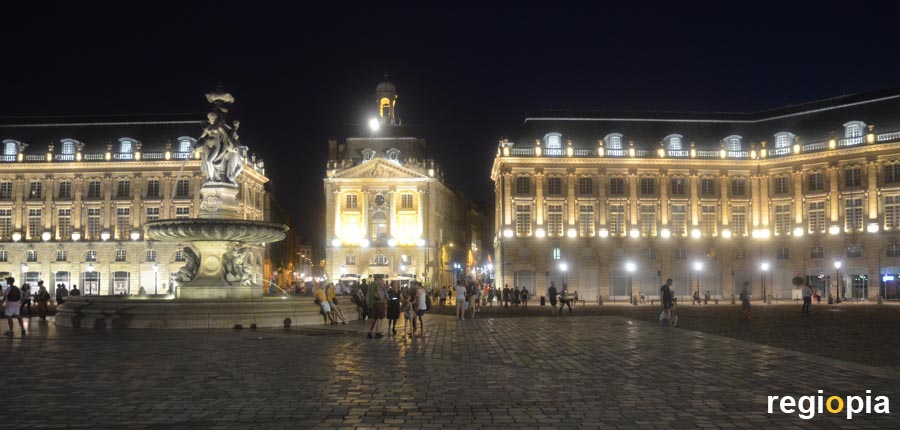
Place de la Bourse
The baroque Place de la Bourse was created in the time of the greatest economic importance of Bordeaux. Bordeaux was in the 18th century the most important seaport of France. The trade with the colonies overseas was handled mostly via Bordeaux. The city grew, became rich and beautiful. For the Place de la Bourse, the medieval city walls were demolished and Bordeaux opened to the Garonne, where the large sailing boats with goods from all parts of the world arrived. Bordeaux made France rich and the king sent his court architect Jacques Gabriel to design the Place de la Bourse. The gracious King Louis XV erect an equestrian statue of himselve on the square, which did not survive the French Revolution. Today, here is the fountain of the three graces. The elegant ensemble consists of two large buildings in the north and south and the former Admiralty House in the center. In the northern building is the Stock Exchange and the Chamber of Commerce, in the south the Musée national des Douanes.
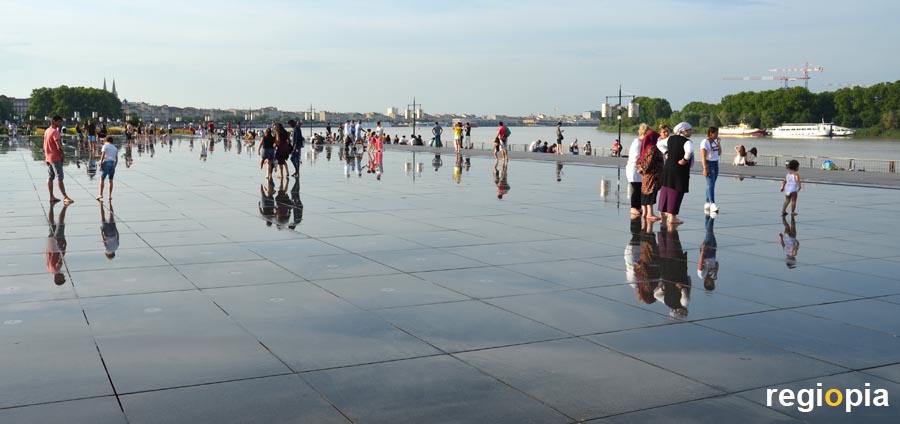
Miroir d'eau
Between Garonne and Place de la Bourse is the miroir d'eau (water mirror). The 130 x 42 m large water surface was devised in the course of the remodeling of the bank by landscape designer Michel Corajoud. The miroir d'eau was realized according to the plans of Jean-Max Llorca and Pierre Gangnet in 2006. The fountain consists of granite plates from which small fountains gush or spray mist. A great fun for young and old. The thin water film also creates spectacular mirror effects, which has made the miroir d'eau the most popular photo opportunity of Bordeaux.
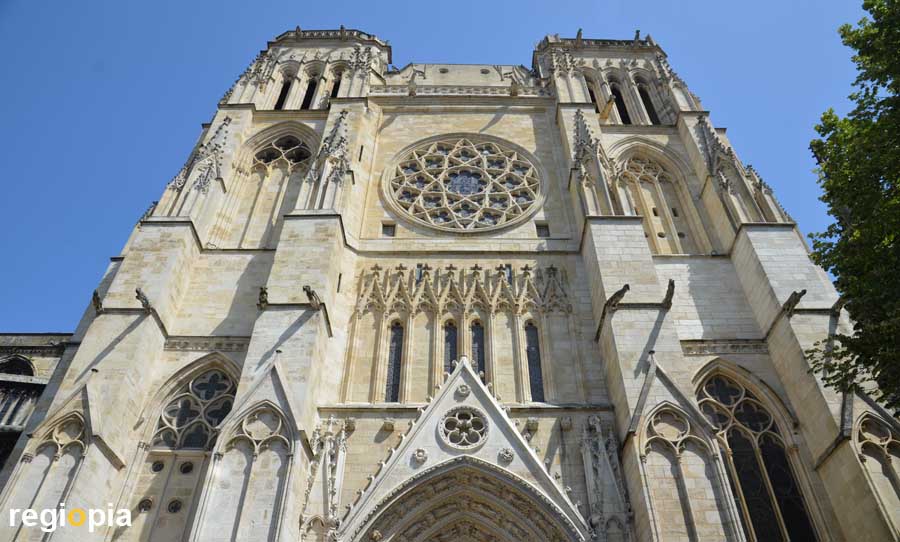
Bordeaux Cathedral
The cathedral is the largest church in the city and one of the most famous sights of Bordeaux. The building is remarkable because it consists of a Romanesque part in the west and a Gothic part in the east. There are four towers in the middle. On the north side, the towers have pointed hoods and soar 80 m into the sky, on the south these spiers are missing. This makes Bordeaux Cathedral look different on each side. The Romanesque church was inaugurated in 1096, the Gothic eastern part was started in 1280 and was completed in 1350. The Saint-André cathedral is single-aisled, which is not unusual for this part of France. The interior is characterized by the Gothic ribbed vaults. Due to the four towers in the middle of the cathedral, it is quite dark there, less light comes through the rosettes than through the windows of the nave.
Behind the choir is the Tour Pey Berland, a free-standing bell tower named after a former bishop of Bordeaux. The Gothic tower was built in 1466 and is 50 m high. The golden figure of Notre Dame d'Aquitaine stands on the top.
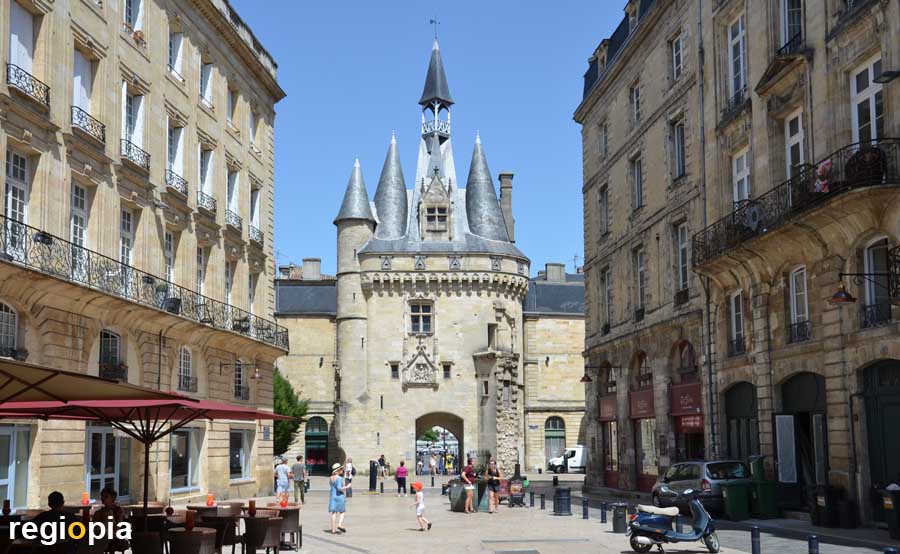
Porte Cailhau
The Porte Cailhau is a defiant tower of the medieval city fortifications of Bordeaux. The tower was built in 1495 in the late Gothic style and is also a triumphal gate of Charles VIII, who immortalized his victories in Italy. Charles VIII had conquered Naples in February 1495 and on the way subjected the Republic of Florence. In order to drive Charles out of Italy, the Holy League of Venice was founded. The Italians succeeded in driving the French out of their homeland in the same year. In the 18th century, the city wallwas demolished, only the Port Cailhau and the Porte de la Grosse Cloche were spared. You can visit the Porte Cailhau and enjoy the view on the Garonne. At the Place du Palais in front of the Porte Cailhau, there are cafés, bars and restaurants that are very popular in the evening.
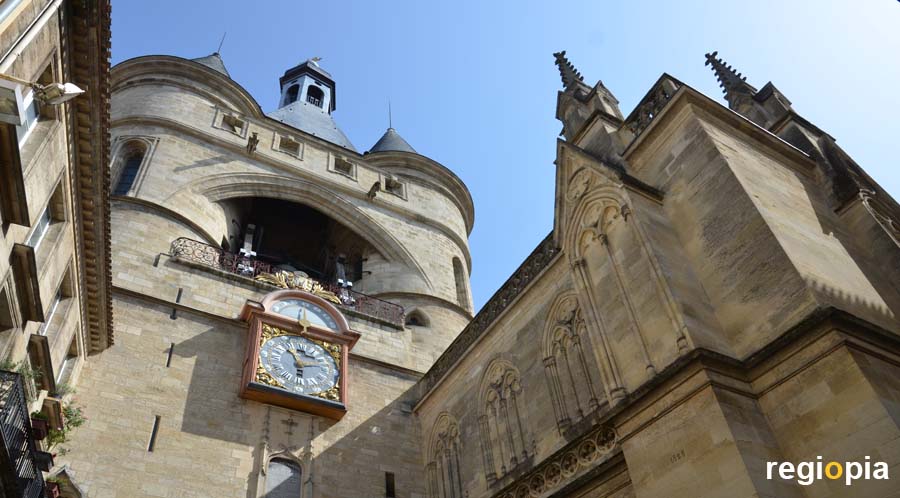
Grosse Cloche
The "Big Bell" is the symbol of Bordeaux. It hangs between two 40 m high, round towers in the former city gate Saint Eloi. The medieval gate was built in the 15th century and was added to the Saint Eloi church. It was the representative city gate to the south and also served as a prison. The bell was very important for the people of Bordeaux, it announced dangers. It was rung on the hour and when foreign armies approached the city or a fire broke out in Bordeaux. However, today's bell is not from the Middle Ages, it was cast in 1775. The "Grosse Cloche" is only rarely rung, for example on New Year's Day and the French National Day, July 14th. You can climb the tower, but you should inform yourself about the opening times beforehand.
ads
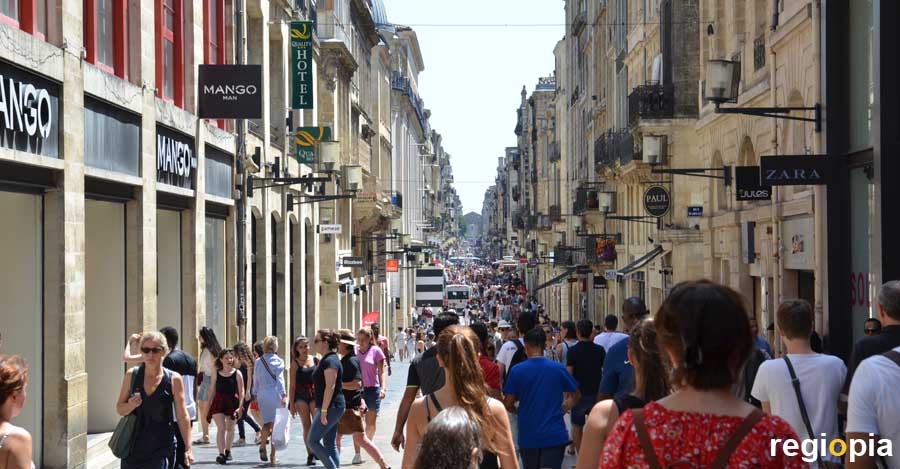
Rue Saint Catherine
Bordeaux (Burdigala) was founded by the Romans and became the capital of the province of Aquitania. The Rue Saint Catherine also dates from this period. It is the former Cardo Maximus, the north-south axis of the city. The pedestrian zone cuts straight through the city center, as created by the Roman surveyors 2,000 years ago. Rue Saint Catherine begins at the Opera in the north and ends at the Porte d'Aquitaine in the south. The Roman east-west axis Decumanus is today's Rue de la Porte Dijeaux. The street is around 1.3 kilometers long, here you will find many well-known shops, such as the Galeries Lafayette department store.
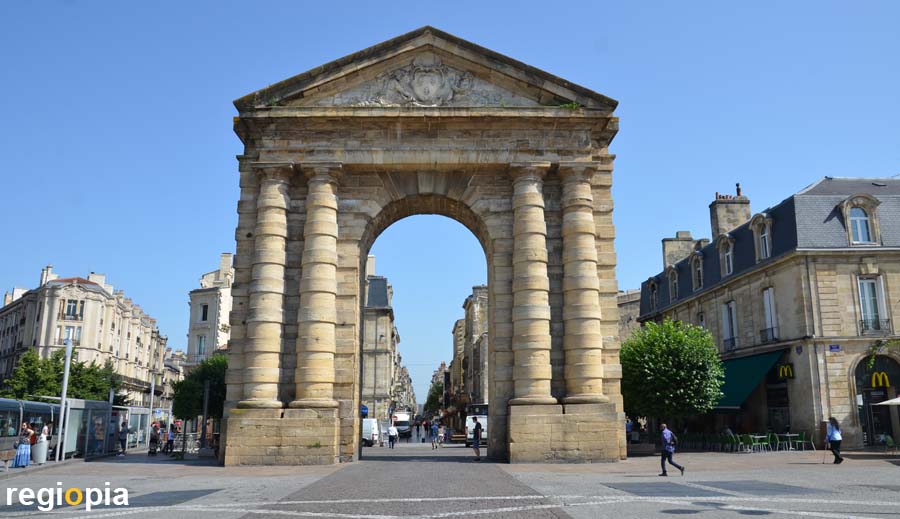
Porte d'Aquitaine
The Porte d'Aquitaine is an archway on the Place de la Victoire, it marks the southern entrance to the center of Bordeaux. Rue Saint Catherine also begins here. The Porte d'Aquitaine was built in 1754 in honor of Prince Monseigneur le Duc d'Aquitaine. The coats of arms of the kings and the city of Bordeaux are depicted on the triangular gable. Originally, the archway had two side passages, which were removed in 1902. There are many cafés on the Place de la Victoire, as the University of Bordeaux is also located nearby.
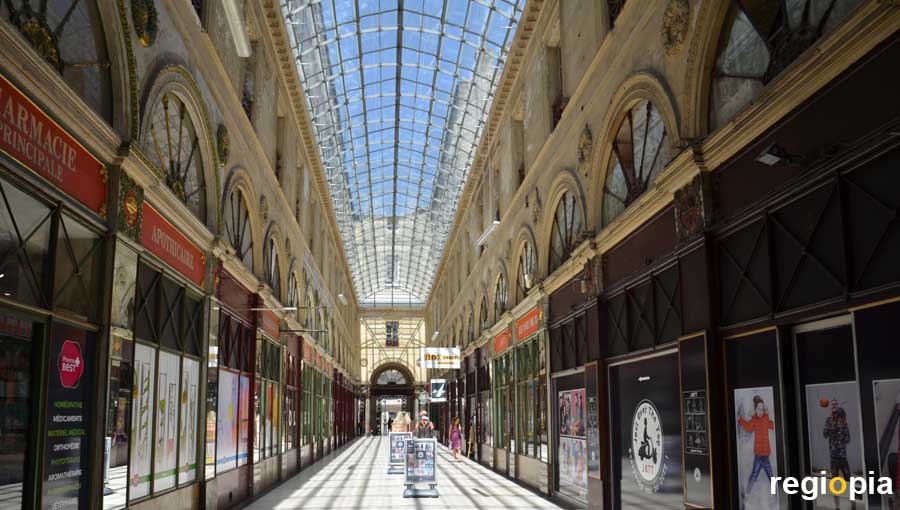
Galerie Bordelaise
The Bordelaise Gallery is a historic shopping arcade on Rue Sainte-Catherine that runs diagonally through a block. It connects the largest pedestrian zone in Bordeaux with the Opera. The Bordelaise Gallery was funded by South American traders in 1833 and designed by architect Gabriel Joseph Durand, who was inspired by trips to Italy and England. The elegant passage impresses with high-quality details made of marble and mirror glass. The floral motifs of the decorations are also very beautiful.
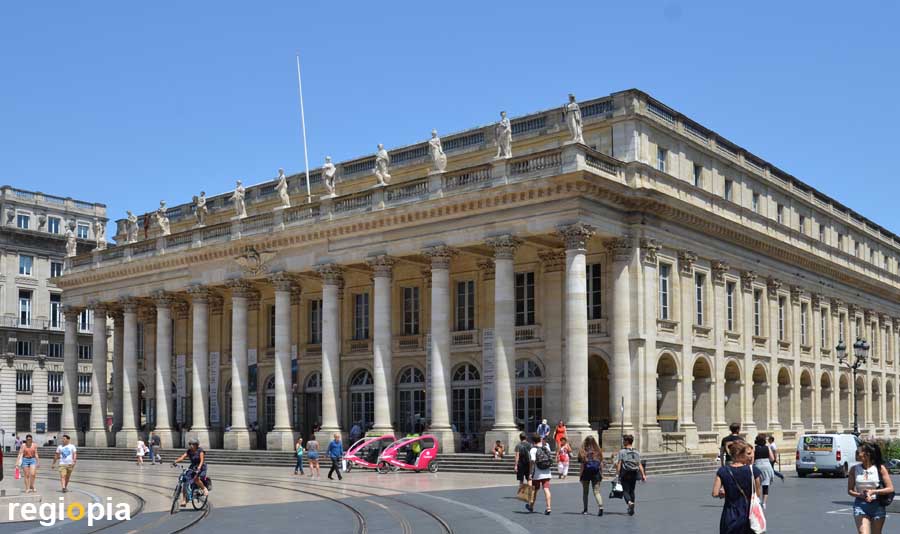
Opera National de Bordeaux
The Bordeaux Opera was built in 1780. The architect Victor Louis hid the Grand Theater behind a classical column row with Corinthian capitals. The facade looks very strict and the stage house cannot be seen from the square in front of the opera. This building could also house a tax office or a court. The only indication of its use are the sculptures on the roof. The cornice shows 12 figures representing 9 muses and 3 gods. The ceiling paintings by Jean Baptiste Claude Robin are very beautiful.
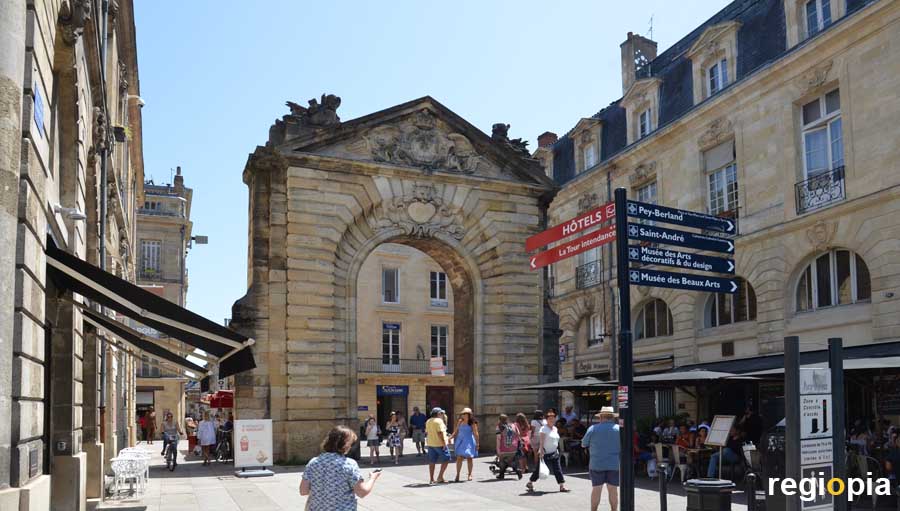
Porte Dijeaux
The Porte Dijeaux is the western end point of the Roman Decumanus. Today's streets Rue de la Porte Dijeaux and Rue Saint-Rémi, which intersect the historic center of Bordeaux in an east-west direction. Both streets are popular pedestrian zones today. In Roman times the Jupiter Temple stood here, from which the current name Dijeaux can be traced. In local dialect, dijàus (French jeudi = Thursday) means Jupiter's day.
The archway was built in 1753 by the architect André Portier in the classicist style. Behind the Porte Dijeaux is the Place Gambetta, which was also designed by Portier.
ads
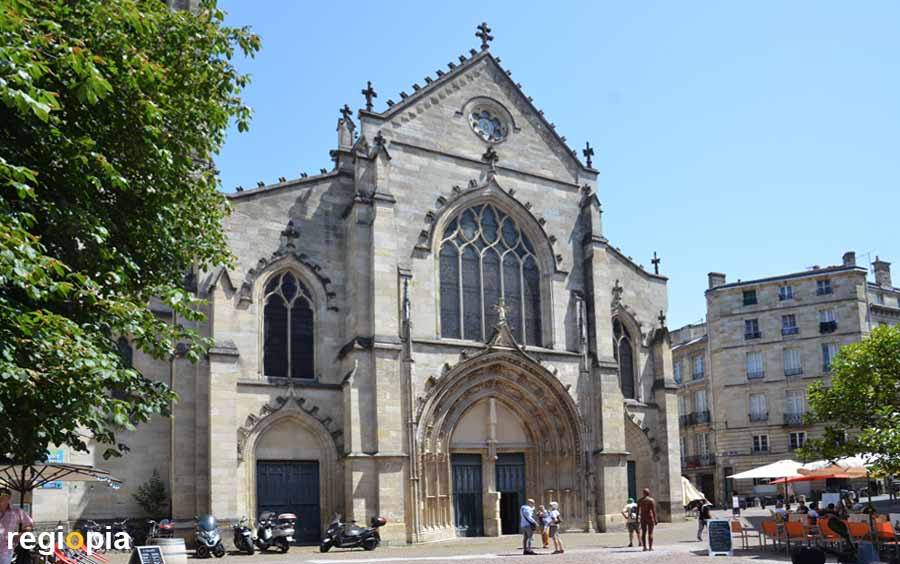
Eglise Saint Pierre
Saint Pierre is a Gothic church in the southern part of the old town of Bordeaux. The construction of the building started in 1358. Construction continued until the 15th century. The Eglise Saint Pierre was the church of the harbor district, a normal medieval church. The bell tower stands north of the west facade and is covered by the tree in the photo. The interior exudes calm and looks very harmonious due to the gray stone and the Gothic vaults. Saint Pierre is also the name of the district, which is characterized by narrow streets and beautiful squares. Numerous cafes and restaurants make this part of the old town a very popular place in the evening.
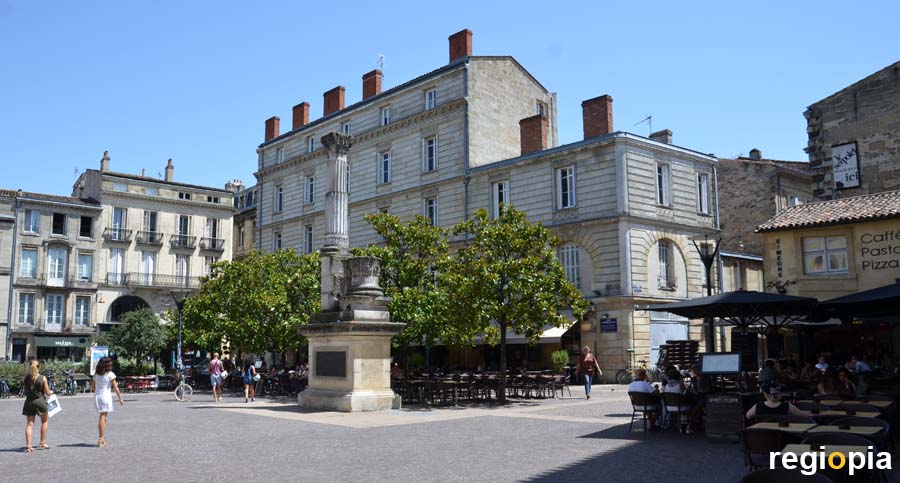
Place Camille Jullian
What makes Bordeaux so personable are the many beautiful squares in the old town. Place Camille Jullian is located in the middle and is one of the largest squares in the densely built-up center. Place Camille Jullian is named after a historian who taught at the University of Bordeaux and researched the early history of Bordeaux. Camille Jullian is known all over France because he also researched the history of the Gauls. The pillars on the square are his monument.
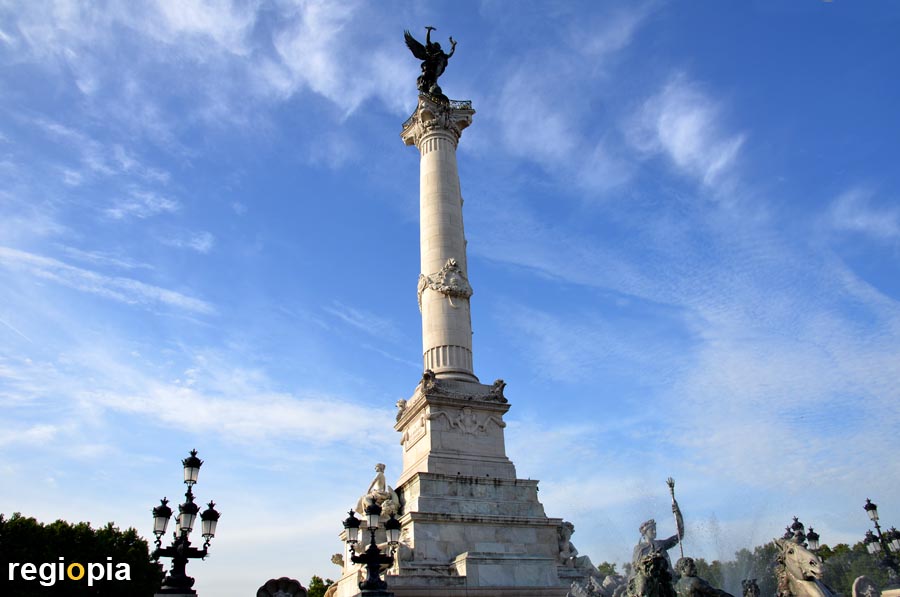
Esplanade des Quinconces
The Esplanade des Quinconces is with around 126,000 m² one of the largest squares in France. The Chateau Trompette used to stand here, a fortress built in 1453 to control the British-friendly population of Bordeaux. Bordeaux belonged until then to England. The fortress was a symbol of suppression by the king. Napoleon demolished the fortress in 1818, thus creating this huge square. The Esplanade des Quinconces is still a large expanse surrounded by trees. To the east, the square borders the Garonne. To the west is one of the sights of Bordeaux, the Monument aux Girondins. It is dedicated to the local victims of the French Revolution of 1789. The monument was built in 1902 and consists of a 43-meter-high pillar, on which hovers an angel that blows up the chains of oppression. At the base of the column is a monumental fountain with allegorical groups of figures that symbolize, among other things, the rivers Garonne and Dordogne, as well as the triumph of the Republic and the triumph of unity.
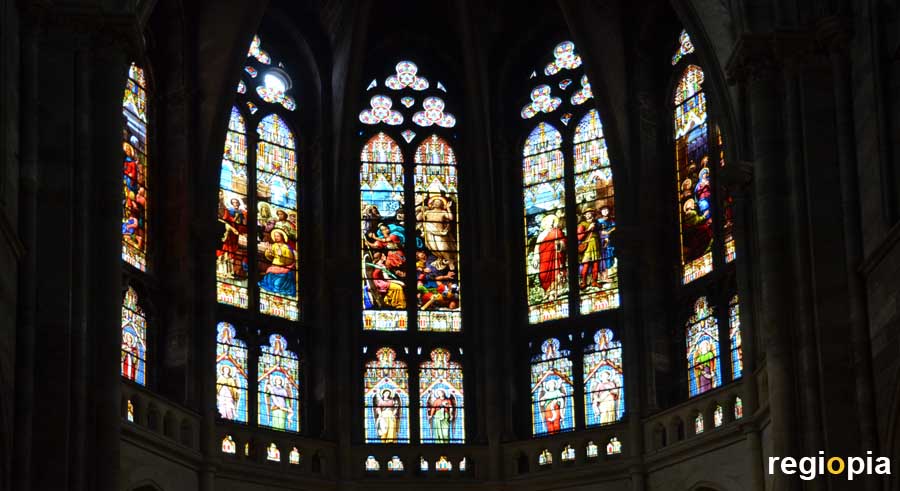
St Louis des Chartrons
The Église St Louis des Chartrons is a neo-Gothic church that was completed in 1880. The architect Pierre-Charles Brun placed the two church towers on the east side, which makes the church clearly visible from the river. The choir, which otherwise points towards Jerusalem (east), is thus in the west. The church was consecrated to Louis IX, also known as Saint Louis in France. Since the church is in the Chartrons district, it is called Église St Louis des Chartrons. The stained glass by Nicolas Lorin and Henri Fleur are the main attraction of the church.
ads
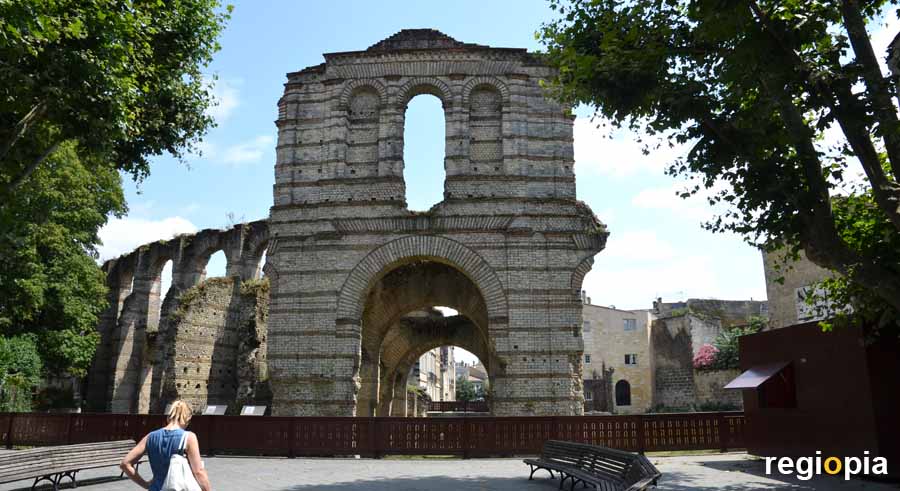
Palais Gallien
The Palais Gallien is a Roman amphitheater that was built outside the city of Burdigala in the 2nd century. Today there are only remnants that are in the vicinity of the Jardin Public. The theater had an elliptical shape and could accommodate around 20,000 spectators. The amphitheater was 130 m long and 110 m wide. The facade was 25 m high and consisted of bricks and natural stone, creating a striped pattern. It is believed that the grandstands were made of wood and were destroyed by fire.
The name "Palais Gallien" is misleading. In the Middle Ages there was a rumor that the ruin was formerly the palace of Galiène, the legendary Queen of Bordeaux. Another assumption is that the theater was named after the Roman emperor Gallienus. But he reigned after the amphitheater was built and it would have been called the Theater of Gallienus.
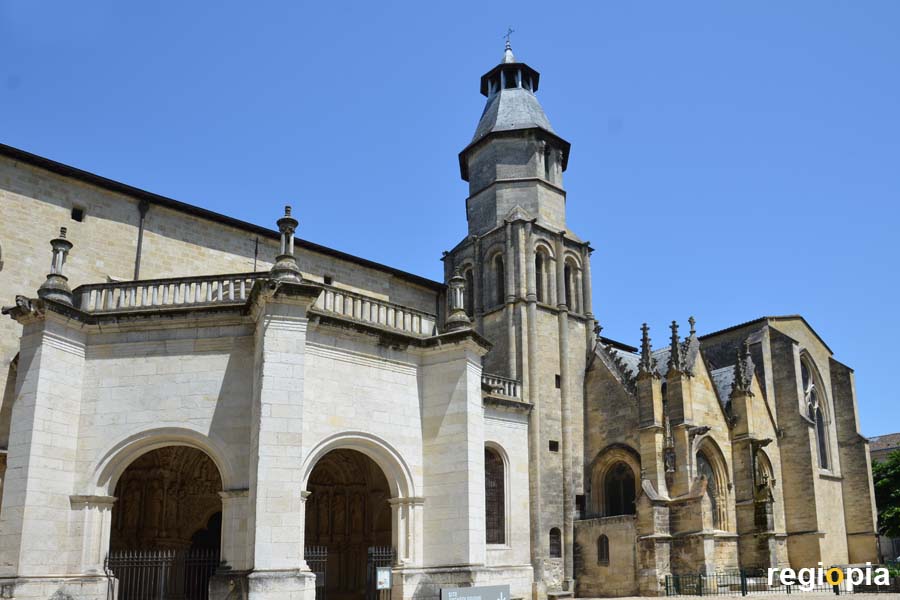
Basilique Saint Seurin
The rather inconspicuous church outside the historic city center is a UNESCO World Heritage Site. The Basilique Saint Seurin is an important stop on the Way of St. James and is therefore on the World Heritage List. The church was built in the 11th century on the ruins of a 5th century church. The church was expanded and rebuilt in later centuries. The neo-Romanesque west facade was built around 1840 by architect Pierre Alexandre Poitevin. A pre-Christian cemetery was found under the church, the first Christian traces in Bordeaux. The crypt is the main attraction of the church, with Merovingian sarcophagi from the 6th century.
Place des Martyrs de la Résistance
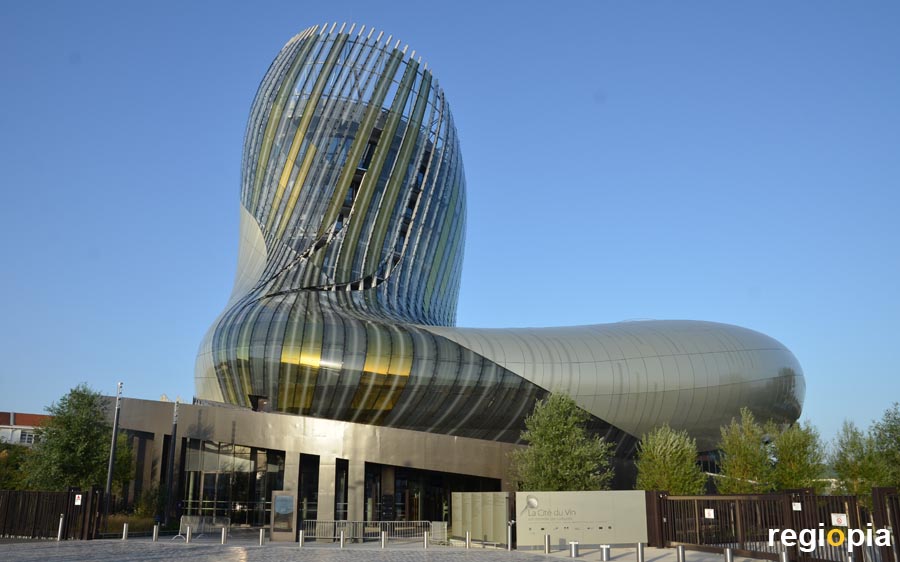
Cité du Vin
The region around Bordeaux is world famous for viticulture. The Cité du Vin is a tourist information center with museum and other facilities on how to make alcohol from grape juice. The Cité du Vin is located north of the city center near the bridge Jacques Chaban Delmas. The 55 m high tower symbolizes a wine glass with light reflections. The building by the architects XTU from Paris was opened in 2016.
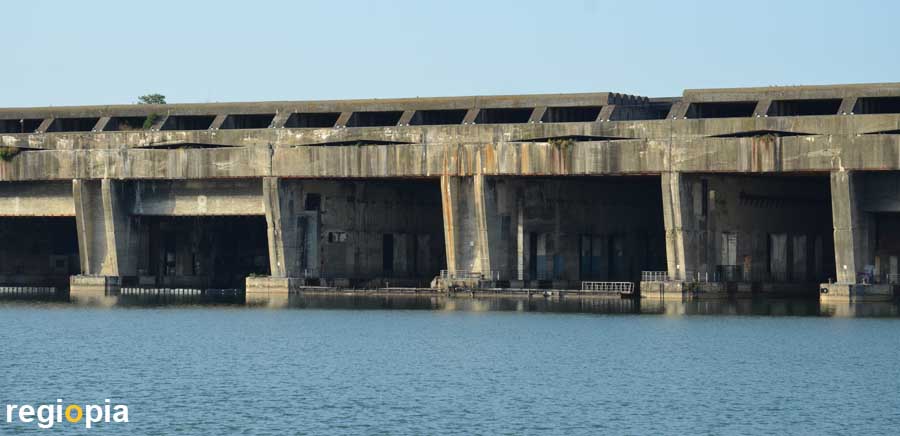
Submarine Bunker
During World War II, the port of Bordeaux was a base of the German submarine fleet, which hunted on supply ships that brought war material to Britain. To protect the submarines from bombing, a massive bunker was built. In the bunker the boats could be maintained and repaired. The construction of the 235 m long bunker began in 1941. The 11 submarine pitches were completed in 1943. 7 basins were built as dry dock and 4 as water basin. In French the bunker is called Base Sous-Marine and is today an exhibttion space of the city of Bordeaux. If exhibitions take place you can visit the historic submarine bunker.
Tourist Map Bordeaux
ads
Bordeaux Guide
Welcome to Bordeaux
Bordeaux is the capital of the Nouvelle-Aquitaine region. Around 250,000 people live in Bordeaux, the region has about 6 million inhabitants. Bordeaux is known for its good wine and its beautiful city center, which has developed from a Roman colony. Bordeaux is an attractive travel destination, which also attracts tourists from all over the world with its endless sandy beaches on the atlantic ocean. The free travel guide of regiopia shows you the most important sights and attractions of Bordeaux.
ads
ads


